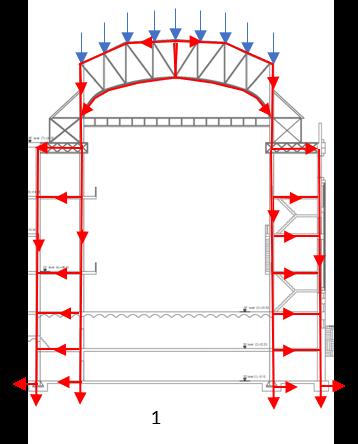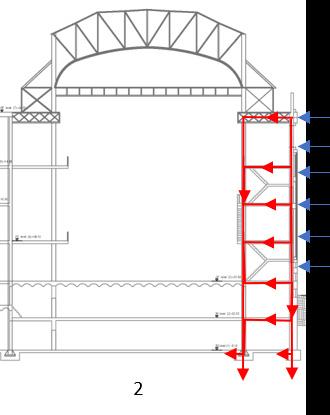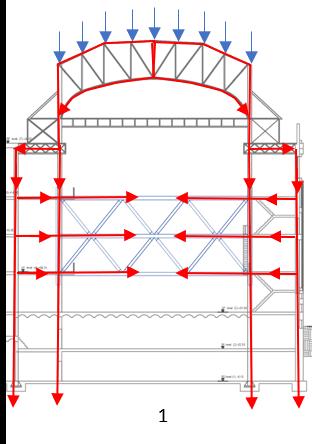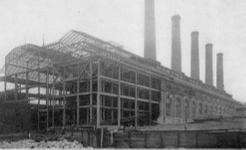
3 minute read
Stability Assessment
from Design Studio 3.1
by Faith Muir
Existing Stability Assessment
From visual inspection of the historical information available it appears the steel frame was constructed first with the masonry façade and floors following after. Therefore the steel frame is the primary form of stability in all directions, and the other elements are secondary.
Advertisement
The steel frame has stiffened column bases, and moment connections at girders. Based on loading information provided there is a large amount unused load capacity in the structure.
The lateral splaying loads imposed by the arch roof will be restrained by portal action in the steel frame.
Due to the long span of the building and the lack intermediate walls along the length of the structure, the steel frame must transfer any lateral loads on the North Façade through portal action to the foundations.
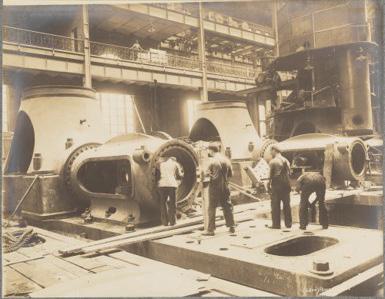
Loading on the East façade will similarly be taken by steel frame, however there may be some contribution by the North masonry façade as a shear wall.
In the horizontal plane the moment connections in the steel frame will provide some stability. The floors on the ground and basement floors and in the walkways will provide a diaphragm. Ground Floor Diaphragm Walkway Diaphragm New Bridge Diaphragms
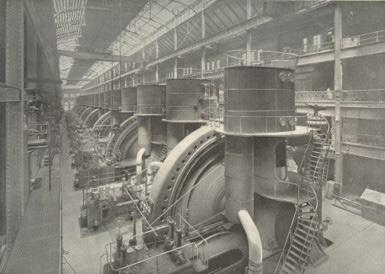

Negative changes to stability
We plan to only minimally interfere with the existing structure, so the existing stability system will remain primarily intact. Overall our changes are to enhance rather than compromise this system.
We are removing a large section of the basement 1 floor, along with sections of masonry below certain archways in the North façade.
The removal from the basement will have negligible effect, as assessment of historical information shows that this floor is not structurally integral as it has been added more recently.
Altering the arches will not have a significant affect on stability. The existing steel frame will remain completely intact, and will be able to take the loading.
The additions we make to the building will impose new loads on the structure. The new bridges, cantilever stairs and space frame in particular will have significant impacts.
These loads will be less than in the full old turbine hall and will be well within the column and slab capacities. The only issue may be the more concentrated nature of the bridge loading, and differential settlement in the column foundations.
Positive changes to stability
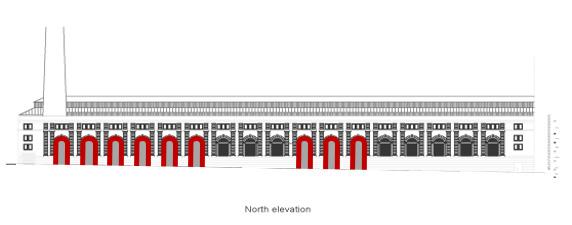
The new bridge trusses will enable transmission of forces between sides of the hall. This will enable the south side steel frame to contribute to resistance against N-S lateral loads, and also contribute as ties to reduce lateral loads and moments imposed by the arch roof on the foundations.
The new steel-timber composite floors in the bridges will also provide additional diaphragms.
(The new space frame is isolated from main superstructure so will not contribute to diaphragm action.)
Existing
Proposed
1 – Lateral forces produced by roof arch – Bridge acts as a tie and reduces lateral loads induced at foundations and moments in columns
2 – Wind loading – Bridge allows transfer of some load to opposite side steel frame, distributing load between more columns and foundations
